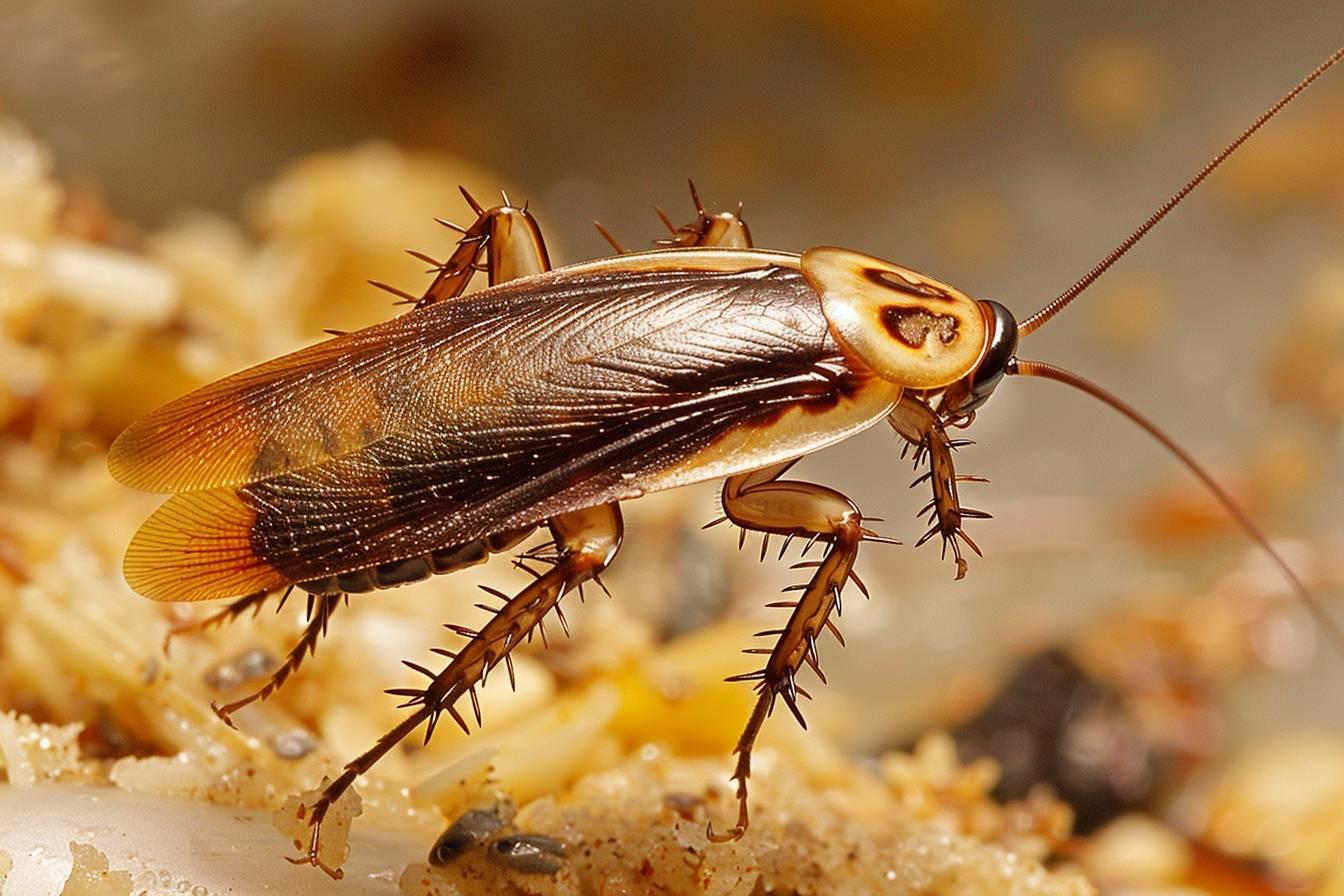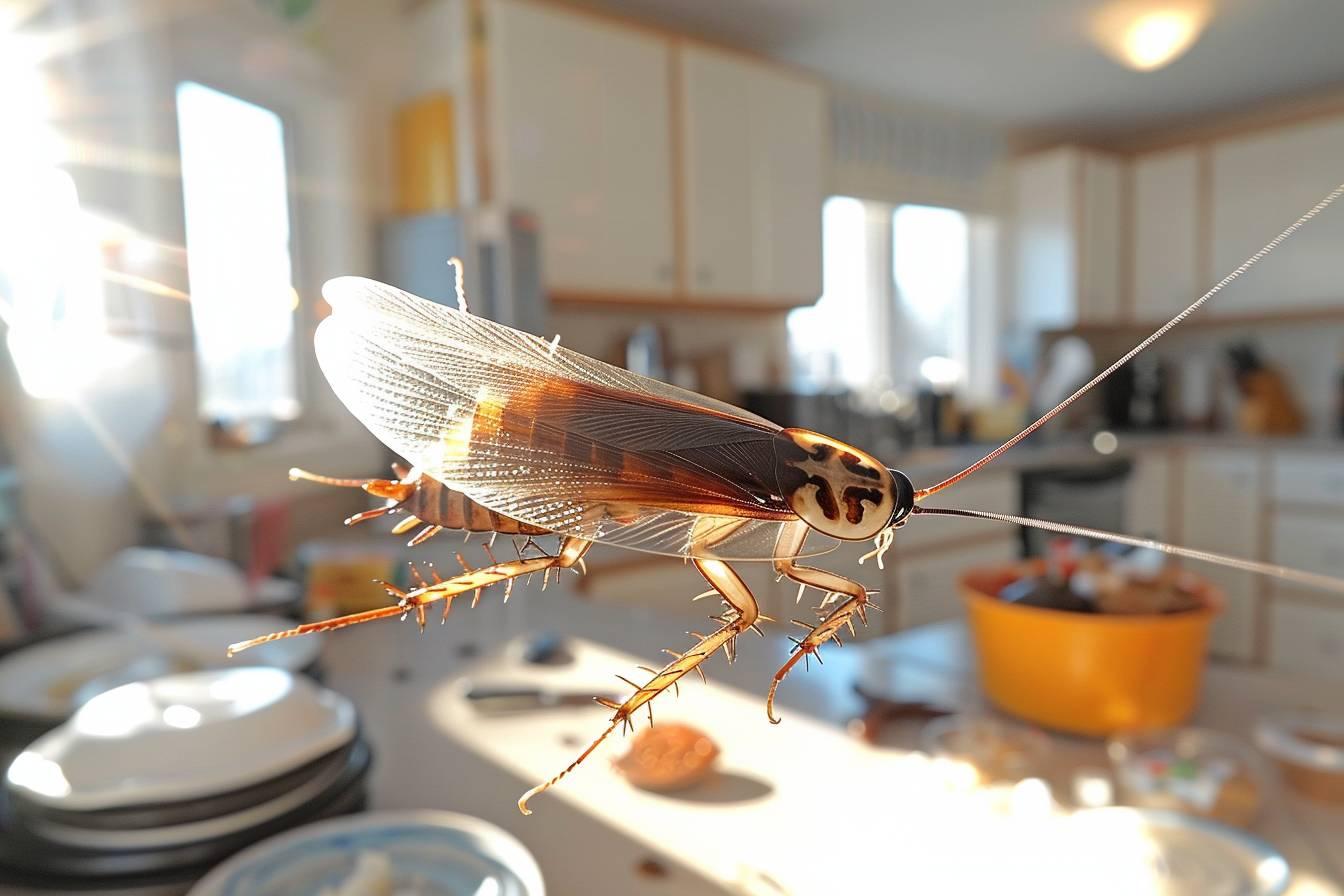Have you ever encountered a flying cockroach ? These winged pests can strike fear into the hearts of even the bravest individuals. In this comprehensive guide, we’ll explore everything you need to know about flying cockroaches, their behavior, and effective methods to deal with them.
Understanding flying cockroaches
Flying cockroaches, also known as alate cockroaches, are not a separate species but rather a developmental stage of certain cockroach species. Most commonly, the American cockroach (Periplaneta americana) and the smokybrown cockroach (Periplaneta fuliginosa) are known to develop wings and fly.
These insects typically develop wings during their adult stage, allowing them to glide or fly short distances. However, not all cockroaches with wings can fly effectively. The ability to fly varies among species and individuals.
Flying cockroaches possess several distinctive features :
- Two pairs of wings
- Long antennae
- Six legs with spines
- Oval-shaped, flattened bodies
The primary purpose of flight for cockroaches is to escape danger or search for mates. They often use their wings to glide from higher to lower surfaces rather than engaging in sustained flight. This behavior can make them appear more erratic and unpredictable, contributing to the fear they instill in humans.
It’s worth noting that flying cockroaches are not inherently more dangerous than their non-flying counterparts. However, their ability to quickly move from one location to another can make them more challenging to control and eliminate.
Habitats and behavior of winged pests
Flying cockroaches are highly adaptable creatures that can thrive in various environments. They are most commonly found in warm, humid climates but can survive in a wide range of conditions. These pests are primarily nocturnal, preferring to hide during the day and become active at night.
Some common habitats for flying cockroaches include :
- Sewers and drains
- Basements and crawl spaces
- Kitchen cabinets and pantries
- Cracks and crevices in walls
- Outdoor areas with high moisture
Flying cockroaches are opportunistic feeders, consuming a wide variety of organic matter. Their diet may include :
- Food scraps and crumbs
- Pet food
- Paper and cardboard
- Fabric and clothing
- Decaying plant matter
One of the most alarming behaviors of flying cockroaches is their tendency to fly towards light sources. This behavior can lead them to enter homes through open windows or doors, especially during warm summer evenings. Once inside, they may seek out dark, moist areas to hide and reproduce.
Understanding the behavior and habits of flying cockroaches is crucial for effective pest control. By identifying their preferred habitats and food sources, homeowners can take proactive measures to prevent infestations and minimize the risk of encountering these winged pests.

Health risks and implications
While the sight of a flying cockroach may be unsettling, it’s essential to understand the potential health risks associated with these pests. Cockroaches, including flying varieties, can pose several health hazards to humans and pets.
Allergens and asthma triggers : Cockroach droppings, shed skin, and saliva contain allergens that can trigger asthma attacks and allergic reactions in sensitive individuals. The World Health Organization (WHO) has identified cockroach allergens as a significant risk factor for asthma, particularly in urban environments.
Disease transmission : Flying cockroaches can carry and spread various pathogens, including :
- Salmonella
- E. coli
- Staphylococcus
- Streptococcus
These bacteria can contaminate food and surfaces, potentially leading to foodborne illnesses and other health issues.
Psychological impact : The fear of flying cockroaches, known as katsaridaphobia, can cause significant stress and anxiety for some individuals. This psychological distress can negatively impact quality of life and mental well-being.
| Health Risk | Potential Consequences |
|---|---|
| Allergens | Asthma attacks, allergic reactions |
| Disease Transmission | Foodborne illnesses, infections |
| Psychological Impact | Stress, anxiety, phobias |
To minimize these health risks, it’s crucial to implement effective pest control measures and maintain proper hygiene in living spaces. Regular cleaning, sealing entry points, and addressing moisture issues can help reduce the likelihood of cockroach infestations and associated health hazards.
Effective control and prevention strategies
Dealing with flying cockroaches requires a multi-faceted approach that combines prevention, exclusion, and targeted control methods. By implementing these strategies, you can significantly reduce the risk of infestations and effectively manage existing pest problems.
1. Seal entry points : Inspect your home for potential entry points and seal them to prevent flying cockroaches from entering. Pay close attention to :
- Gaps around windows and doors
- Cracks in foundations and walls
- Openings around pipes and utility lines
2. Reduce moisture : Flying cockroaches are attracted to damp environments. Address moisture issues by :
- Fixing leaky pipes and faucets
- Using dehumidifiers in basements and crawl spaces
- Ensuring proper ventilation in bathrooms and kitchens
3. Maintain cleanliness : Regular cleaning and proper sanitation can deter flying cockroaches by eliminating food sources and hiding spots. Focus on :
- Promptly cleaning up food spills and crumbs
- Storing food in airtight containers
- Regularly emptying trash and recycling bins
4. Use natural repellents : Certain natural substances can help repel flying cockroaches :
- Bay leaves
- Cucumber slices
- Essential oils (peppermint, eucalyptus, or tea tree)
5. Implement traps and baits : Strategically place cockroach traps and baits in areas where flying cockroaches are frequently observed. These can help reduce populations and monitor infestation levels.
6. Consider professional pest control : For severe infestations or persistent problems, consult a licensed pest control professional. They can provide targeted treatments and develop a comprehensive management plan tailored to your specific situation.
By combining these strategies and remaining vigilant, you can effectively control flying cockroach populations and minimize the risk of future infestations. Remember that consistent effort and regular maintenance are key to long-term success in managing these winged pests.

